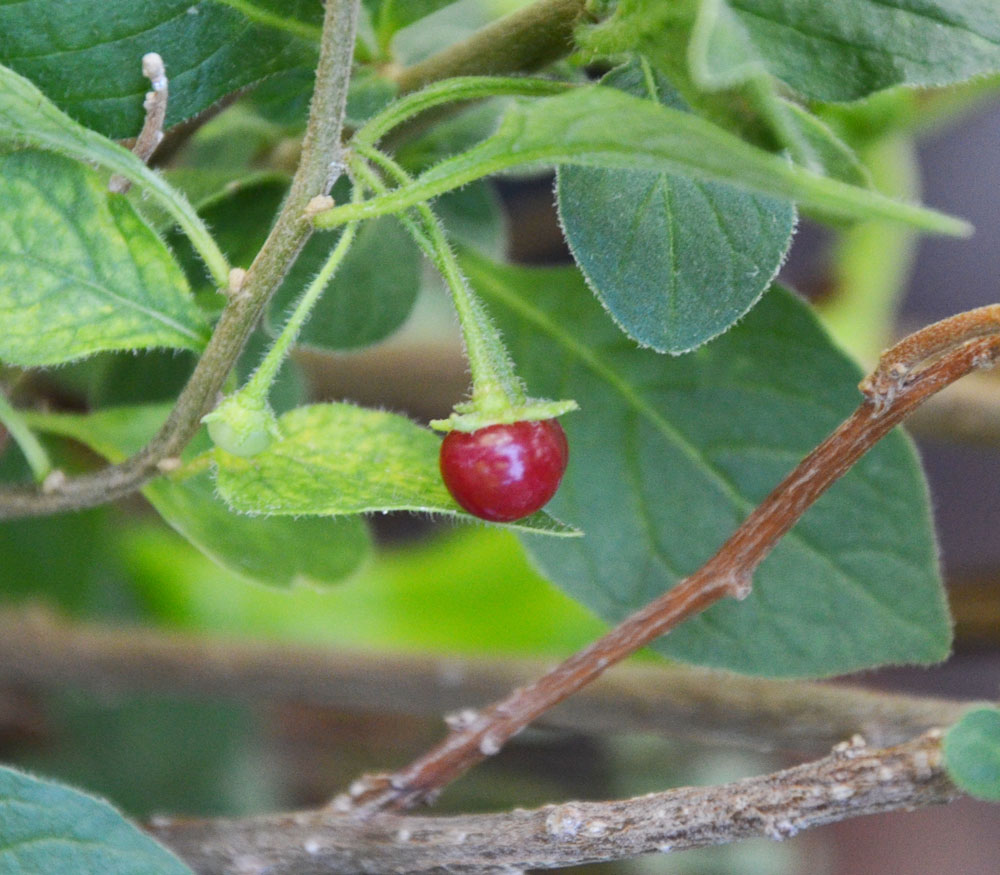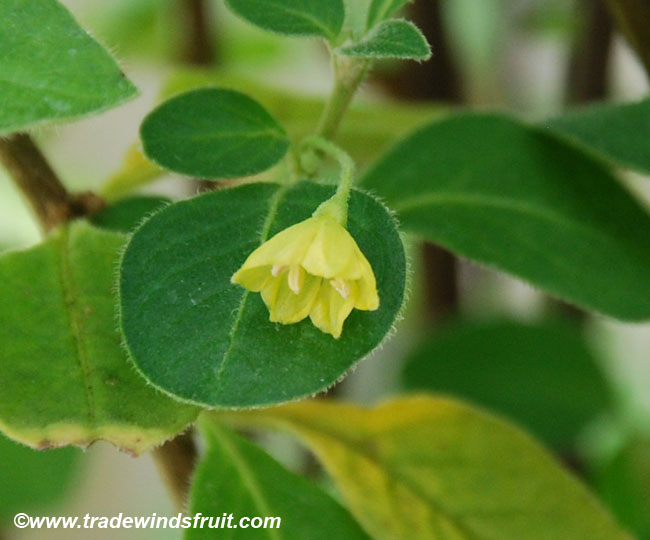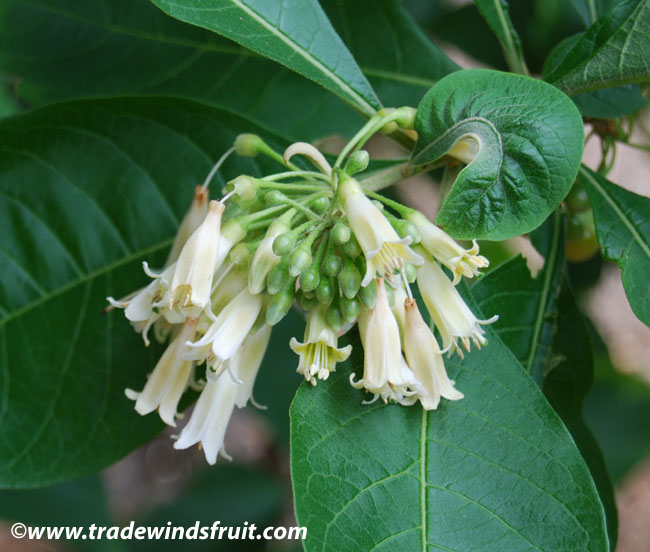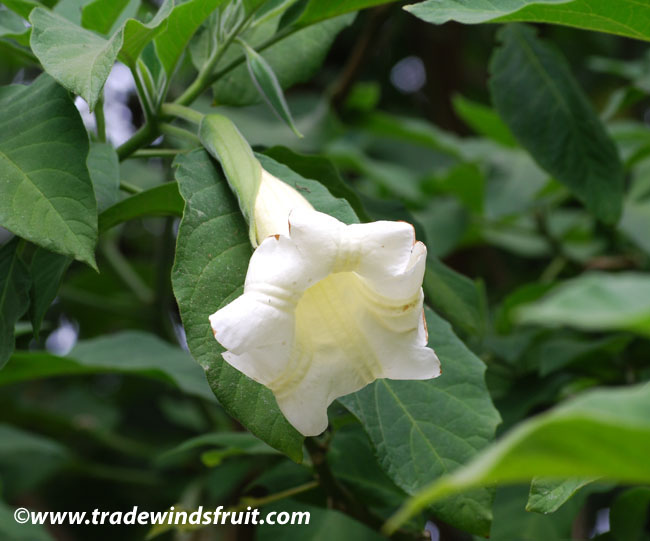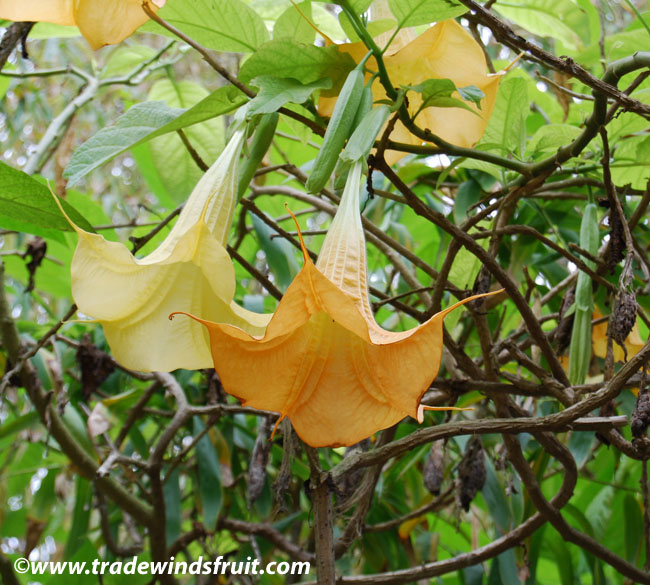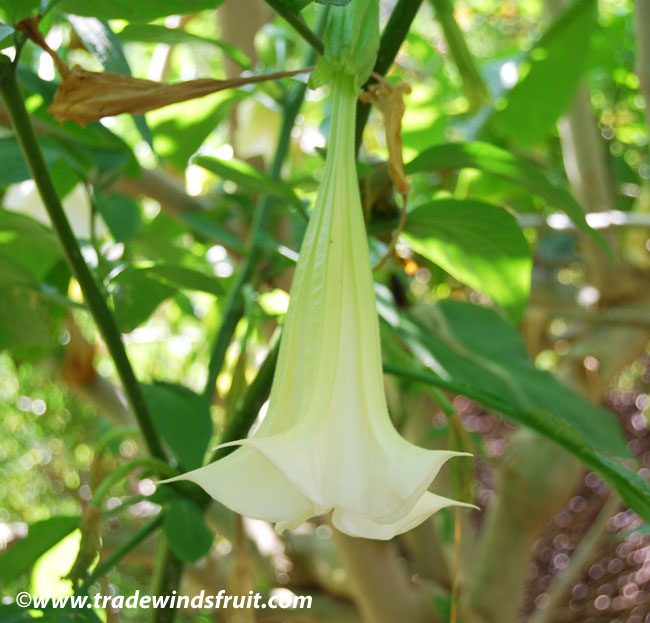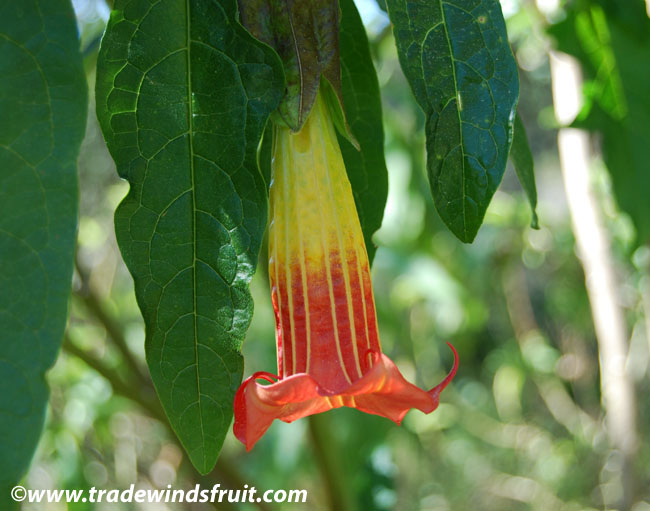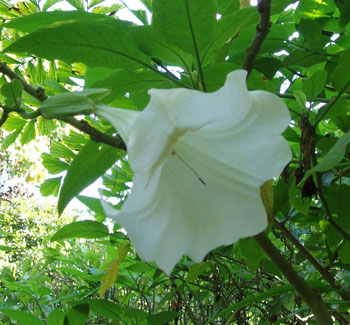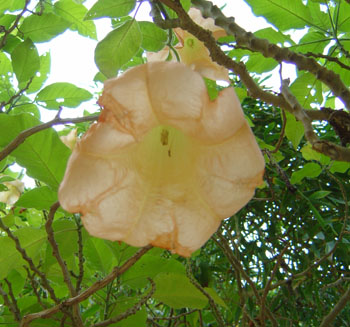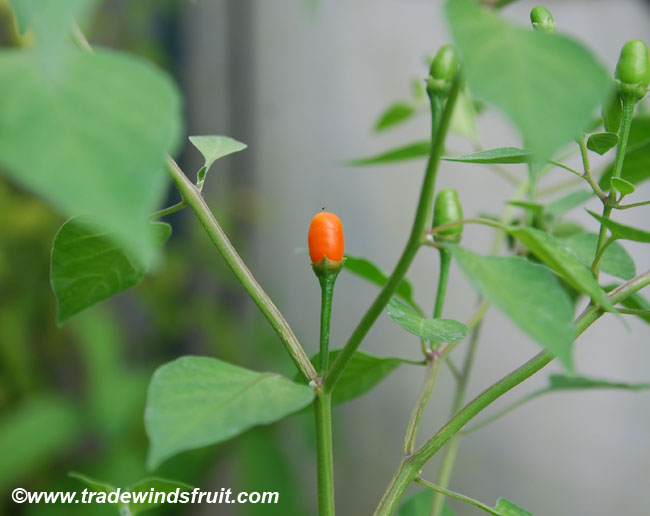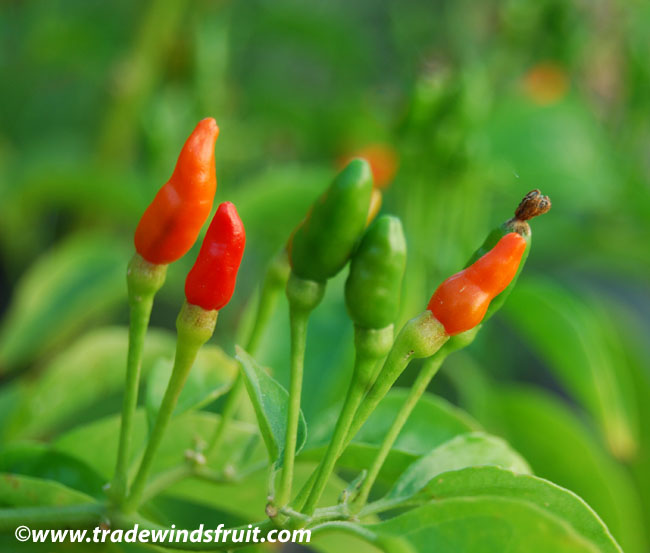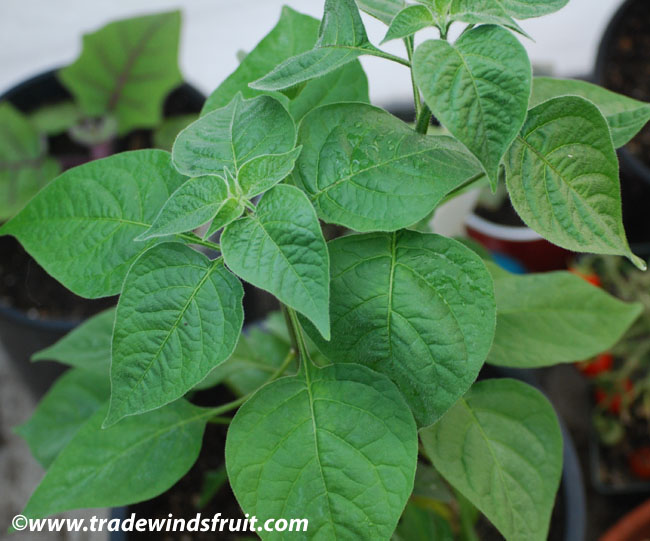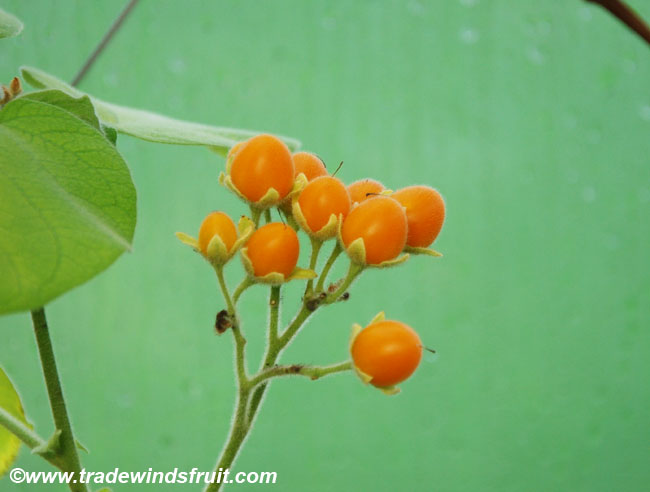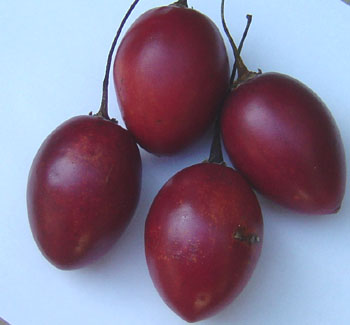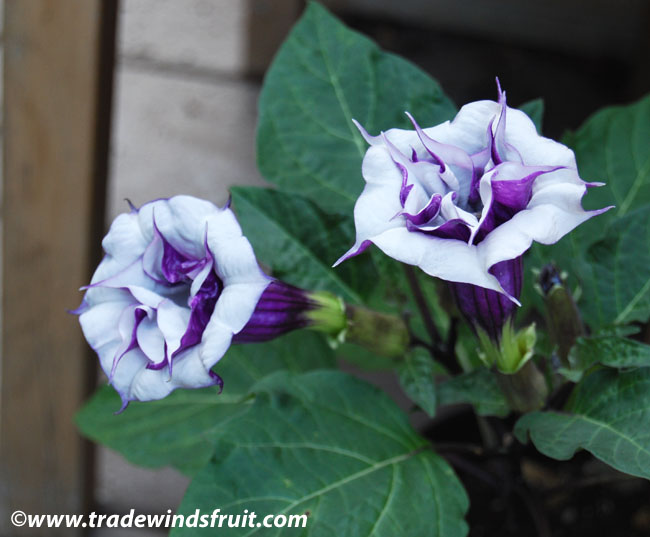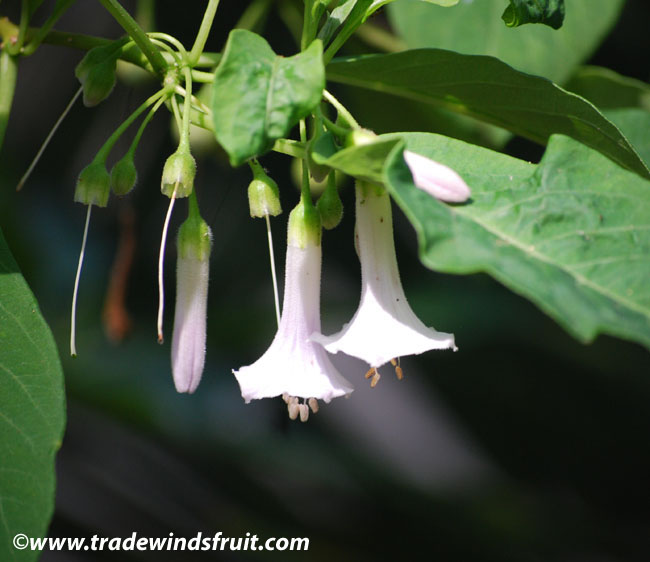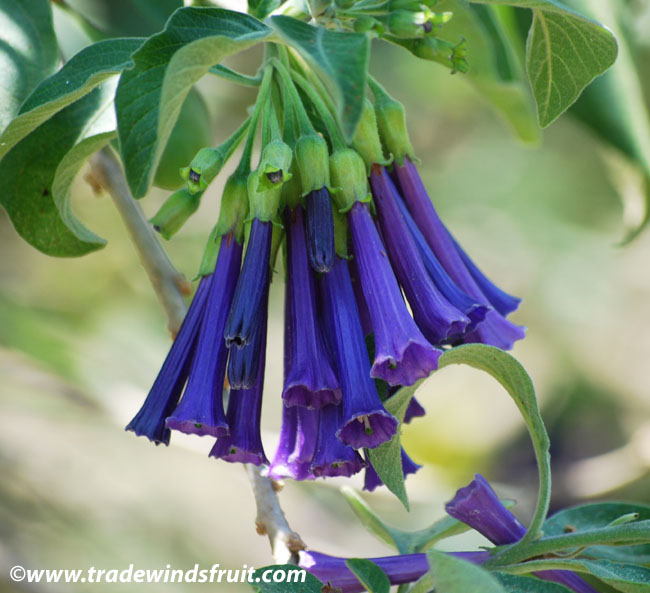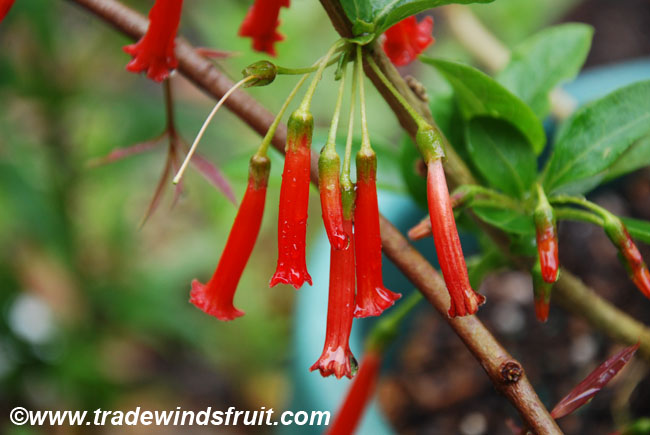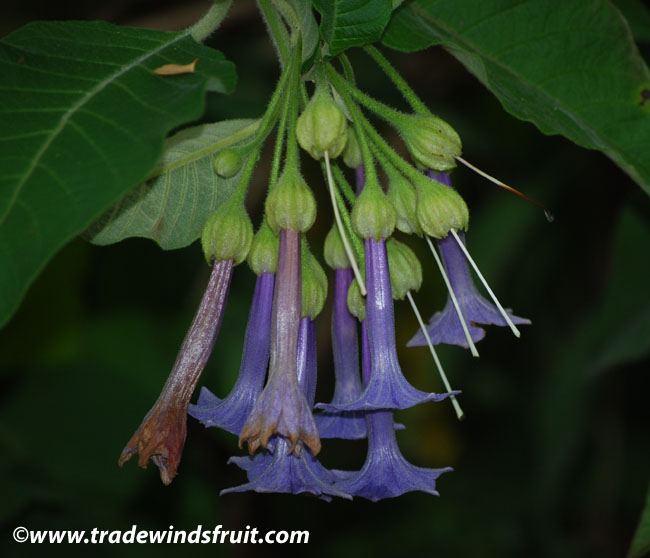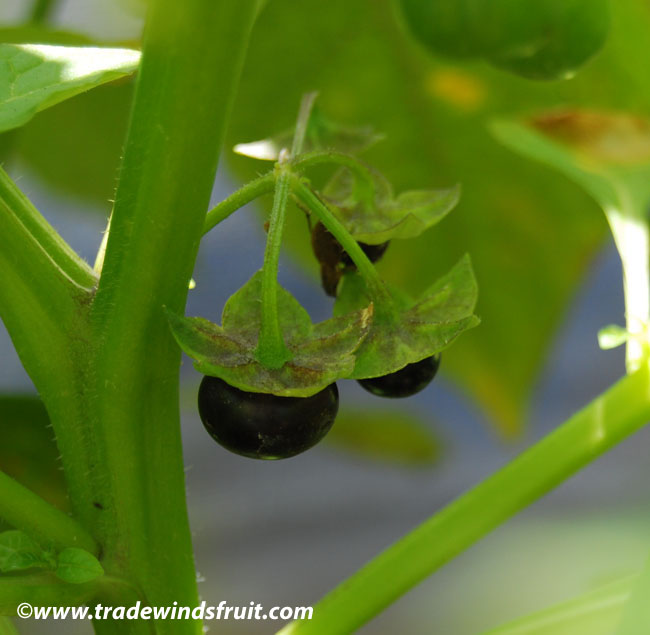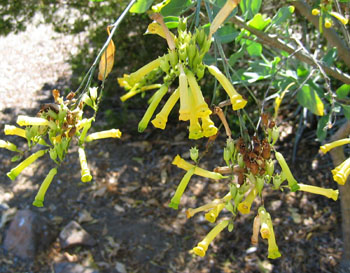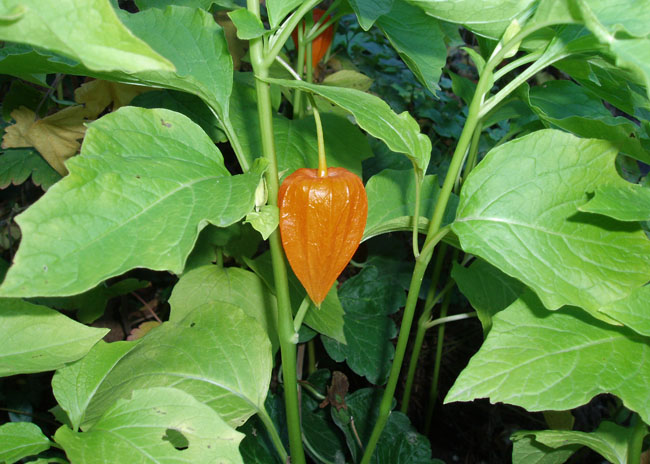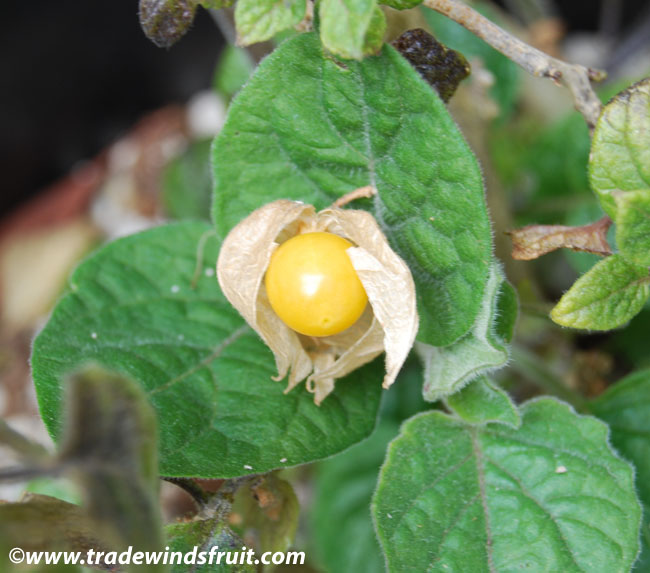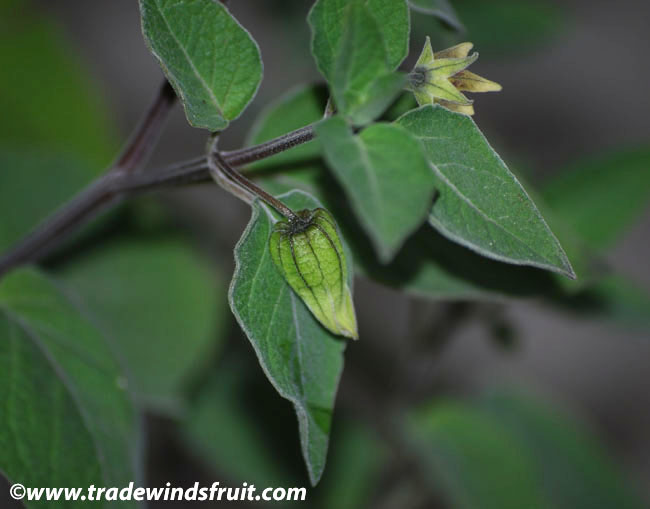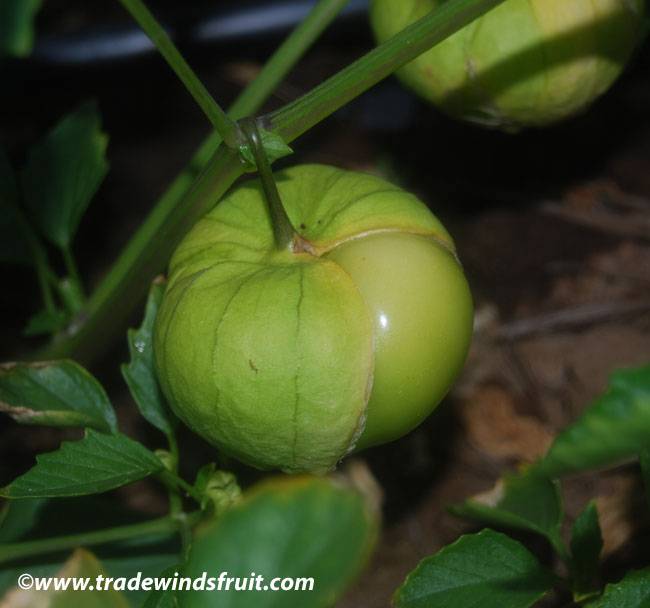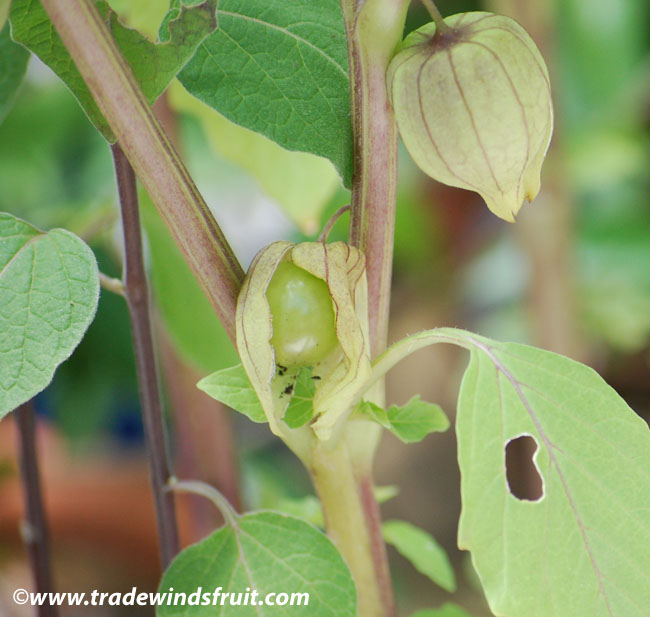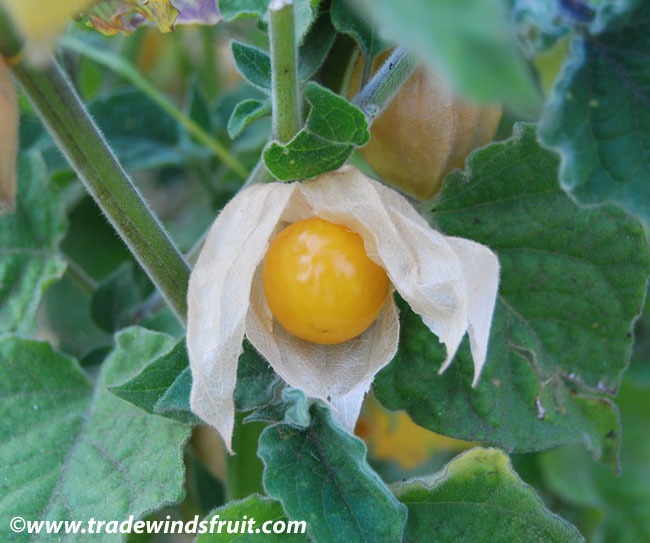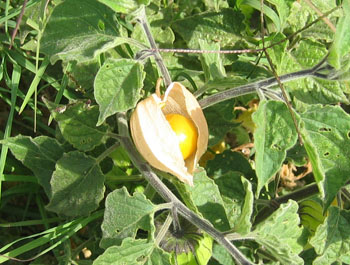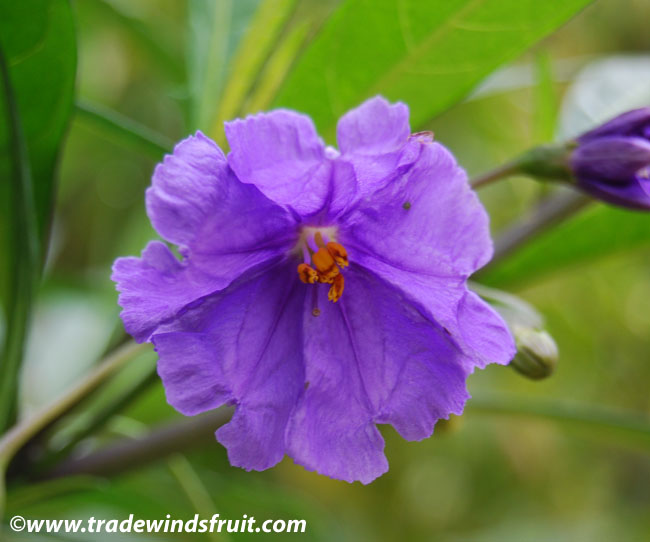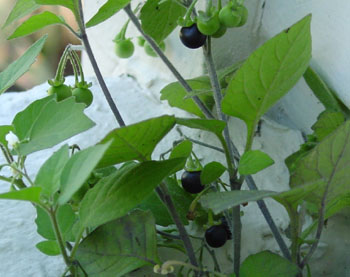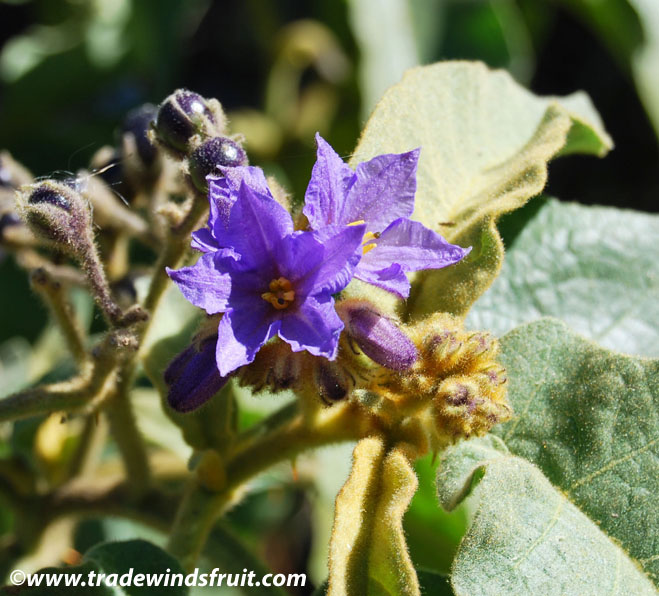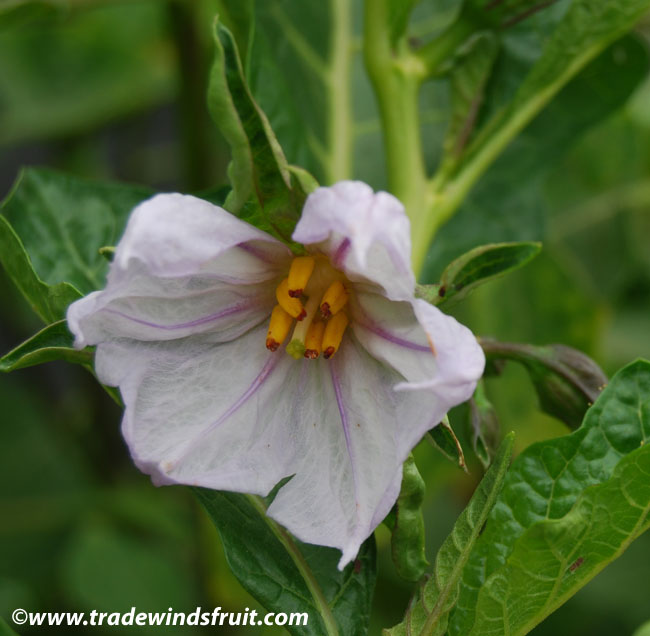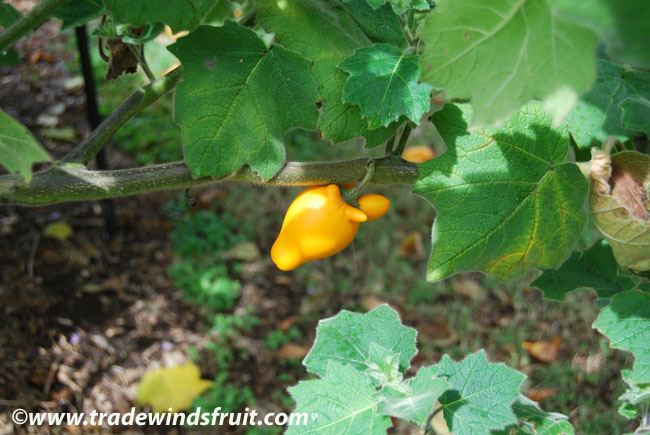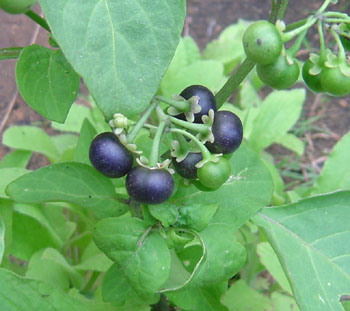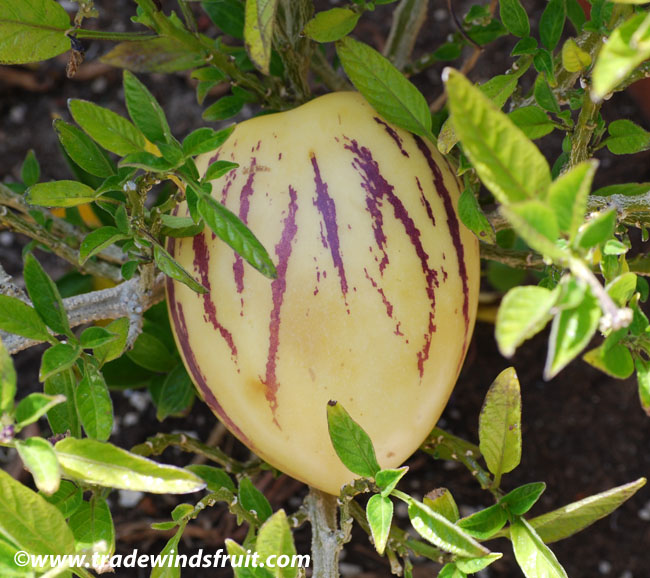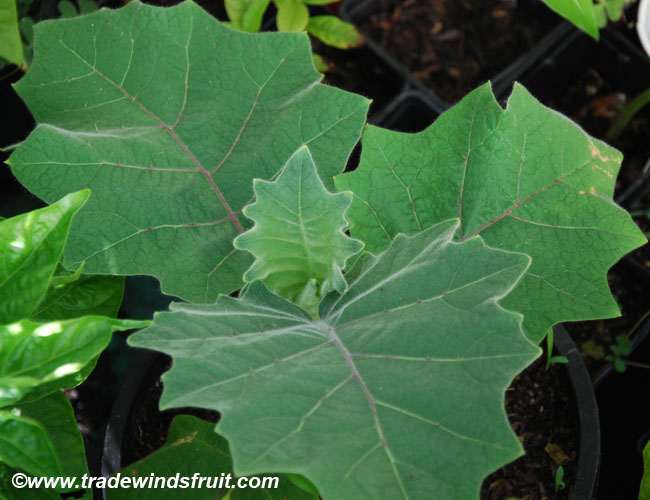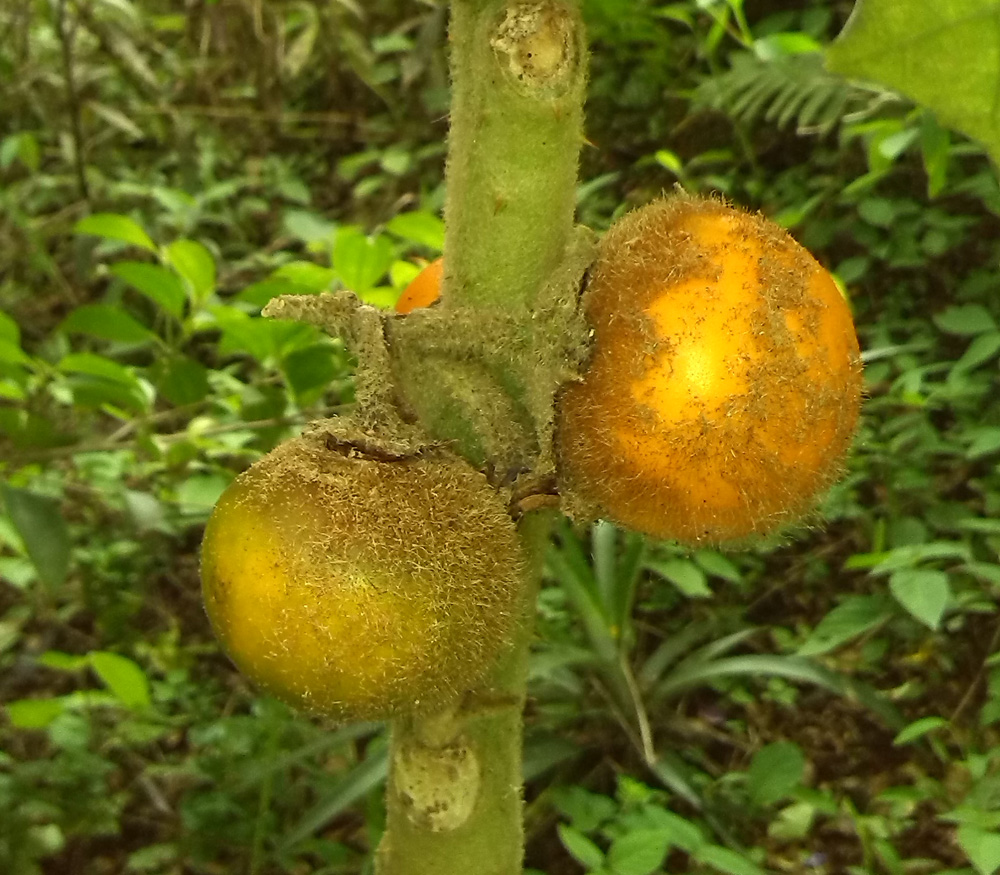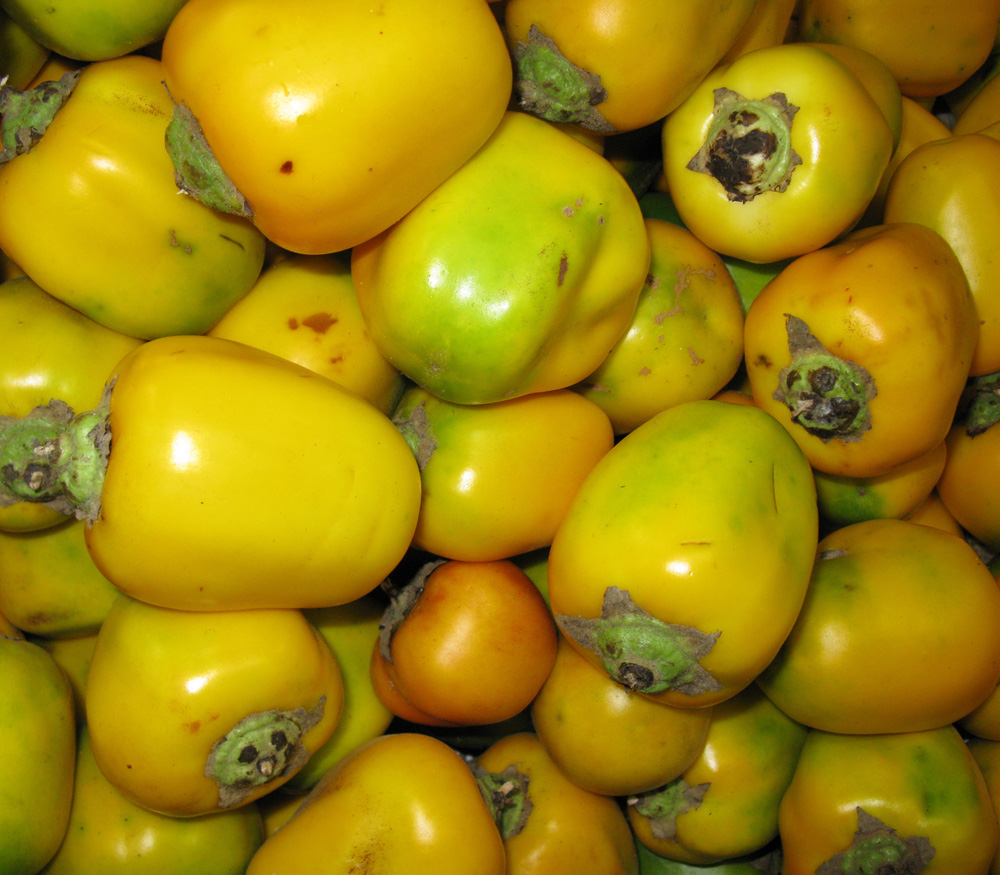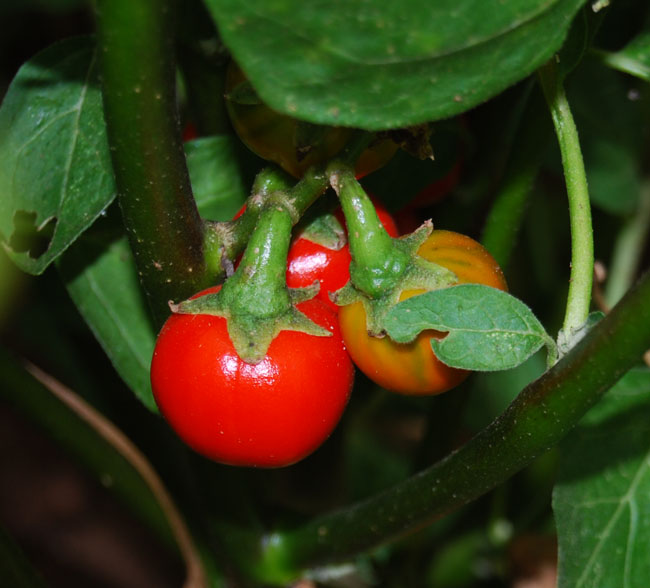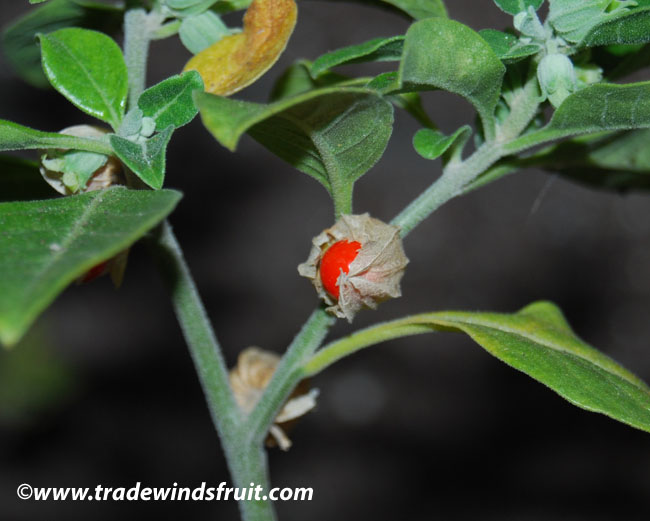- Home »
- Information »
- Capsicum rhomboideum
Capsicum rhomboideum
Capsicum rhomboideum
A very exotic and rare wild pepper bearing tiny, pea size red fruits without heat. This species is noteworthy as one of the remaining primitive wild peppers, an almost living fossil and part of a group of possible forebearers of the more common domesticated species.
Seed Availability
Seeds are now available at our seed store.
Description
A small shrub that can grow as high as six feet though usually remains much smaller. Growth is more or less upright, somewhat compact. Compared with the common Capsicum's, this species barely looks like a pepper. Leaves are rounded, hairy and unlike common peppers in appearance. Flowers are bright yellow, with a general bell shape, but a distinctive Capsicum-like arrangement of stamens and pistils. The tiny berry fruits may follow flowering and ripen to red. Fruits are attached to a prominent five pronged calyx. The seeds are dark brown-black. C. rhomboideum is also of note for having 13 chromosome pairs (2n=26)---a trait shared with several extremely rare, primitive wild peppers. All domesticated and virtually all common wild peppers contain just 12 chromosome pairs (2n=24).
Hardiness
Unknown.
Growing Environment
Of the very rare wild Capsicum's, this species is one of the easiest to grow. It does well in a range of conditions, though it should be watered fairly regularly during growing months. Grows well in filtered and full sun. Thrives in humid conditions, but test plantings have done fine in drier air as well.
Propagation
By seeds. The seeds can be difficult to sprout but using normal pepper germinating procedures generally shows good results.
Uses
The fruits are said to be edible with no heat and a very subtle sweetness. Rarely cultivated but in demand both as a curiosity and an ornamental amongst collectors.
Native Range
Native from Southern Mexico through Venezuela and Northern Peru.

